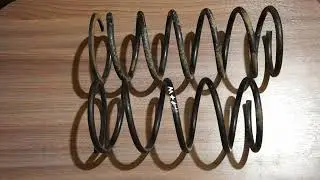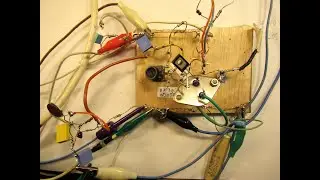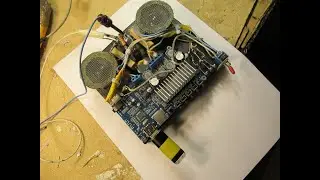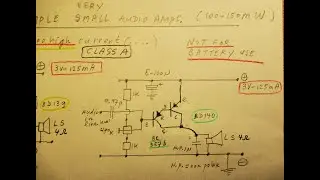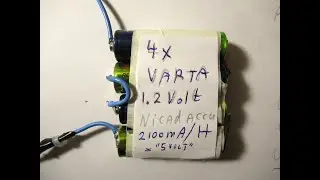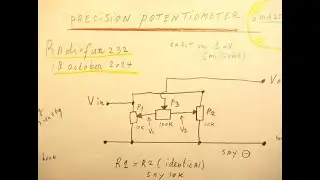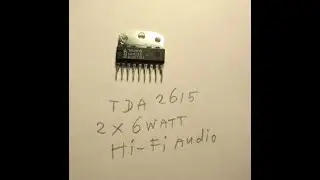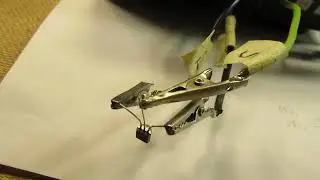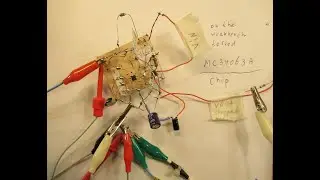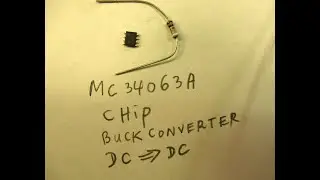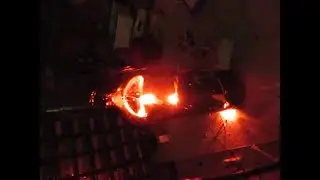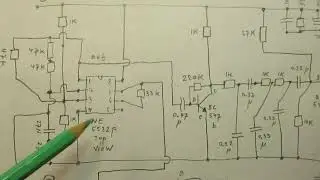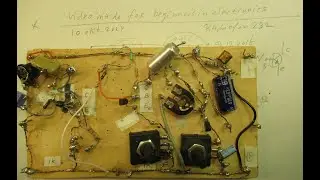Frequency divider by 10 or more (schem. & demo with the 7490 TTL Chip + link to analog freq. meter)
Schematic & demo of a Chip TTL frequency “divider by 10” & the driver transistor input circuit that makes that frequency divider (the 7490 Chip or the 7490LS90N = the low Schottky type) work. I used a BC 547 b (NPN Silicon, Hfe 300).
Normally that BC 547 b only goes to max. 10 MC, but it worked also higher. If not: use a typical HF transistor, like the BF199, must be a HF type that amplifies properly. The driver transistor has to have a Hfe (=current amplification factor) of minimum 100, also in case of a a typical HF transistor. The BF 199 NPN Silicon has that good amplification factor. In the past I made an analog frequency meter with this circuit, going to 20 MC. In such a case you need a microvolt meter with a big scale (say 8 cm wide), then you can read out the frequencies easily (of course: not in a digital way, but sometimes analog measurements give a better insight).
With more “divider by 10” Chips in a row, you can divide by 100, 1000, etc. There are, by the way, also MOSFET Chips with the same functionality (frequency dividing). In general they are cheap. And, of course, there is Ali Express where you can buy a simple digital frequency counter for 10/20/30 Dollars or Euro’s.
Schematic & demo of an analog frequency meter (20 Hz-19 KC, May 2016, made with a 555 Chip) is here: • Analog frequency meter 45 Hz-19kHz sc...
Second video about this analog frequency meter (May 2016, with that 555 Chip) is here:
• Analog frequency meter 45 Hz - 19 KHz...
Experiment with the value of C1 to fit it to the freq. band where you want to use the circuit. Experiment between 220 pF and 0.1 uF (=100N).
There are more than 1000 Video’s on my YT channel. I only do analog electronics: audio amplifiers, analog measuring devices, radio circuits, many Shortwave radios, many oscillators HF and audio, other audio & shortwave circuits. Also many (test) generators for all kinds of waveforms, both in the audio range and HF. Also simple “switch” circuits like the Schmitt triggers acting on different input voltages, 555 circuits and circuits of basic electronics issues like “Ohms law”, resistance properties, capacitance properties, the capacitors testing process, electronic “matching” in audio circuits and audio amplifiers, audio pre amplifiers, microphone amplifiers, etc. In all cases you find the schematic inserted in the video.
When you have questions about (certain analog) electronic circuits and how to make them: go to my Channel trailer (Radiofun232 on You Tube) and go to the “looking glass”. Type there the keywords that you want/need like: “power supply”, audio amplifier, capacitor tester, oscillator, radio, shortwave, shortwave radio, or any keyword you like to find the essential info & schematics on my YT channel.
My You Tube channel trailer is here: • Radiofun232 on YouTube (updated monthly) When you search, search always “NEWEST FIRST” to get the right overview. You can also search via the “looking glass” on my Channel trailer via keywords like ”audio”, “radio”, “amplifier”, “filter”, “Shortwave”, “transistor”, “FET”, “oscillator”, “generator”, “switch”, “schmitt trigger” etc; so the electronic subject you are interested in. My books about electronics & analog radio technology are available via the website of "LULU”, search for author “Ko Tilman” there.
https://www.lulu.com/search?adult_aud...
I keep all my YT videos constant actual, so the original video’s with the most recent informations are always on YouTube. Search there, and avoid my circuits that are republished, re-arranged, re-edited on other websites, giving not probable re-wiring, etc. Some persons try to find gold via my circuits. I take distance from all these fake claims. I cannot help that these things happen. Upload 9 May 2021.
For my followers: the 110 V power supply series is paused for a while, I burnt out the MOSFET. Have ordered some new ones, they will arrive in a few days from Germany (Reichelt website).




